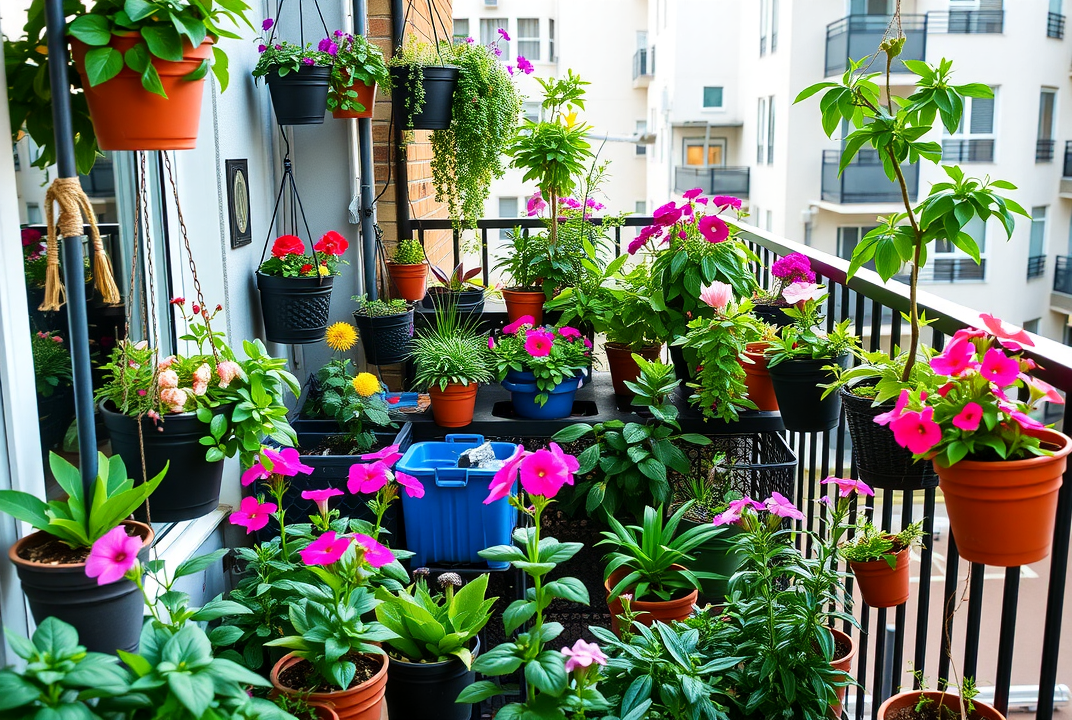Small Space Gardening: Essentials for Every Beginner

Introduction
Did you know that even a small space can transform into a flourishing garden packed with your favorite herbs, vegetables, and flowers? More people are discovering the joys of small space gardening, allowing green enthusiasts of all levels to experience nature's bounty without a sprawling backyard.
In this article, you'll dive into the essentials every beginner needs to start a small space garden. We'll discuss the tools, techniques, and tips crucial for making the most out of limited garden space. Whether you reside in an urban setting or simply want to utilize a tiny balcony, this guide will set you on the path to successful gardening.
Why Choose Small Space Gardening?
Space Efficiency: One of the greatest benefits of small space gardening is its efficiency. Unlike traditional gardening, it requires minimal space and can fit into any corner, balcony, or window sill.
Cost-Effective: It’s a budget-friendly way to bring greenery to your living space without the need for large amounts of soil or costly equipment. By using containers and recycled materials, the costs are further reduced.
Environmental Benefits: Gardens of any size promote biodiversity, aid in cooling your environment, and improve air quality – both indoors and outdoors.
Mental Health: Gardening has been linked to improved moods, decreased stress, and increased feelings of well-being. Starting small allows you to enjoy these benefits without feeling overwhelmed.
Choosing the Right Plants
When space is limited, selecting the right plants is crucial. Opt for those that thrive in containers and need minimal space to grow. Some excellent choices include:
-
Herbs: Basil, mint, rosemary
-
Vegetables: Tomatoes, lettuce, radishes
-
Flowers: Petunias, marigolds, pansies
Selecting plants that grow vertically or have a small footprint can maximize your space efficiently. Look for dwarf varieties or those specifically bred for container gardening.
Essential Tools and Materials
Before you start, gather the necessary tools to ensure a seamless gardening experience. A few essentials include:
-
Containers: Various sizes suitable for different plants
-
Potting Mix: Lightweight and nutrient-rich soil
-
Watering Can: For regular irrigation
-
Pruning Shears: For maintaining plant health
-
Gardening Gloves: To protect your hands
Your choice of containers can add a touch of personal style. Consider repurposing items like old buckets, teapots, or wooden crates for a creative yet functional touch.
Soil and Fertilizer
The foundation of a robust garden lies in quality soil. Opt for a potting mix tailored for container plants to ensure proper drainage and aeration. Enriched potting soils come with added fertilizers, but supplementing with organic options like compost or fish emulsion can further bolster plant health.
Watering Techniques
Small space gardens may require more frequent watering compared to traditional gardens due to evaporation from both the sun and container. Develop a consistent watering routine to keep your plants hydrated. Consider these tips:
-
Water early in the morning to reduce evaporation
-
Use self-watering pots for consistent moisture levels
-
Implement drip irrigation systems for minimal intervention
Light and Location
Understanding light requirements is pivotal for plant growth. Choose a location where your plants receive adequate sunlight. If natural light is scarce, consider using grow lights to provide the necessary energy.
Pest Management
Maintaining plant health also involves contending with potential pests.
Common Pests:
Aphids
Spider Mites
Whiteflies
Utilize organic methods to control pests, such as neem oil or companion planting with repellent herbs like lavender and rosemary.
DIY Projects for Small Spaces
Enhance your gardening experience with these DIY ideas to optimize your space:
-
Vertical Gardens: Use trellises or wall planters
-
Hanging Baskets: Perfect for trailing plants or flowers
-
Tiered Planters: Maximize vertical space even further to accommodate more plants
Maintaining Your Garden
Consistency is key in small space gardening. Regularly prune, water, and feed your plants. Remove dead leaves and be vigilant about pest control to ensure continuous growth.
Common Mistakes and How to Avoid Them
-
Overcrowding: Ensure plants have space to grow and sufficient airflow.
-
Overwatering: Adjust watering based on moisture needs.
-
Ignoring Pests: Be proactive in pest management.
Conclusion
Starting a small space garden can be a fulfilling venture that brings nature right to your doorstep. By following the outlined essentials, you can create a flourishing garden space, improve your well-being, and embrace a greener lifestyle.
Take the first step towards cultivating your botanical haven today. Happy gardening!